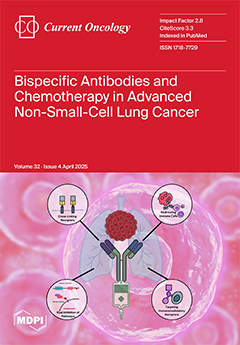Background: This study aimed to compare the clinical, pathological, and biochemical characteristics of upper rectal cancer (URC) and mid–lower rectal cancer (MLRC) in stage II and III non-metastatic rectal cancer and to identify distinct prognostic factors influencing survival and recurrence.
Material and Methods: This retrospective cohort study included 100 patients with stage II and III non-metastatic rectal adenocarcinoma who underwent neoadjuvant chemoradiotherapy (nCRT) followed by curative-intent surgery between 2021 and 2024. Patients were categorized into URC (n = 53) and MLRC (n = 47) groups. Parameters analyzed included demographic factors, ASA score, surgical characteristics, pathological features (tumor stage, lymph node involvement, lymphovascular invasion (LVI), perineural invasion (PNI), tumor budding, tumor regression grade (TRG)), and biochemical markers (carcinoembryonic antigen (CEA), carbohydrate antigen 19-9 (CA19-9), white blood cell (WBC) count, neutrophil count, platelet count (PLT), and C-reactive protein (CRP)). One-year overall survival (OS) and disease-free survival (DFS) were analyzed using Kaplan–Meier survival curves, and Cox regression models identified independent prognostic factors.
Results: Preoperative CEA levels were higher in MLRC (
p = 0.05), whereas WBC count (
p = 0.01), neutrophil count (
p = 0.02), PLT (
p = 0.01), and CRP levels (
p = 0.01) were higher in URC. Pathological analysis revealed higher LVI (
p = 0.04), PNI (
p = 0.04), and tumor budding (
p = 0.03) in MLRC. At one-year follow-up, OS rates were 82.1% (URC) vs. 80.3% (MLRC) (
p = 0.85), and DFS rates were 78.6% (URC) vs. 73.4% (MLRC) (
p = 0.72). Multivariate Cox regression analysis identified age (HR: 1.04,
p = 0.03), ASA score (HR: 1.22,
p = 0.01), CRP (HR: 1.18,
p < 0.001), preoperative CEA (HR: 1.12,
p = 0.02), preoperative CA19-9 (HR: 1.09,
p = 0.03), LVI (HR: 1.42,
p < 0.001), PNI (HR: 1.35,
p = 0.02), and tumor budding (HR: 1.28,
p = 0.03) as independent prognostic factors for OS. Similar trends were observed for DFS, with T stage (HR: 1.35,
p = 0.01) and tumor size (HR: 1.22,
p = 0.01) also being found significant.
Conclusions: Inflammatory markers, tumor burden indicators (LVI, PNI, budding, tumor size, T stage), and preoperative CEA/CA19-9 were identified as significant predictors, suggesting a risk-adapted approach to rectal cancer treatment.
Full article






